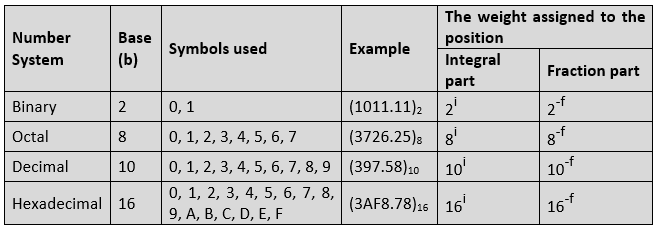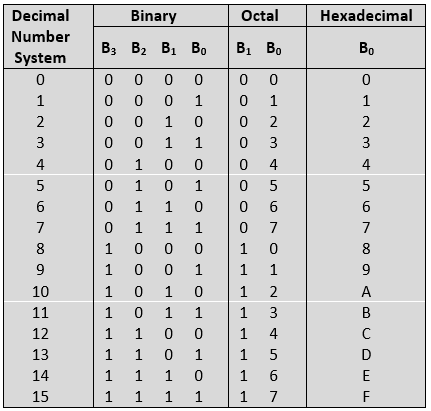Digital Electronics: Digital Number System
Digital Number System
In the real world, when any person says that “he has 8 rupees.”, we understand the statement easily, but digital systems don’t understand it. Digital systems understand the information in the form of a binary number system. In the digital systems, number 8 depicted the decimal number system form. In the digital world, many number systems are present. In this article, we will learn more about the different number systems used in the digital systems to perform various tasks or applications.

Where, N=Number; b=Base or radix
Classification of Number System
The number system is classified into two types, which are given below-
- Weighted Number system
- It is a positional weighted system.
- Every place value of a given number has some weightage.
- Binary, Octal, Hexadecimal, BCD, etc., are examples.
2. Unweighted Number System
- It is a non-positional weighted system.
- Gray code, Excess-3 Code, is an example.
The characteristics of the most extensively used number system are:-

From the above table, we can observe that a number having base ‘b’ contains different digits ranging from ‘0’ to ‘b-1’.
Concept of Significant bit
In Digital Number System, there are two types of significant bits:
- LSB: - Least Significant bit (right-most place value)
- MSB: - Most Significant bit (left-most place value)

Types of Weighted Number System
As mentioned in above section, weighted number systems are of following four types:
- Binary Number System
- Octal Number System
- Decimal Number System
- Hexadecimal Number System
Let’s discuss each of above number systems.
Binary Number System
In binary number system, the numerical value of base ‘b’ is 2. In this system, a number can be depicted using different digits among 0, 1. They are also known as “bits.”
| e.g. (1101)2 |
Octal Number System
In the octal number system, the numerical value of base ‘b’ is 8. A number can be depicted using different digits among 0, 1, 2, 3, 4, 5, 6, and 7. It is very useful for reducing the complexity of numbers represented in the binary system by grouping them into groups of three.
| e.g. (687)8 |
Decimal Number System
In the decimal number system, the numerical value of base ‘b’ is 10. A number can be depicted in this system using different digits among 0, 1, 2, 3, 4, 5, 6, 7, 8, and 9.
| e.g. (689)10 |
Hexadecimal Number System
In the hexadecimal number system, the numerical value of base ‘b’ is 16. In this system, a number can be depicted using different digits and alphabets among 0, 1, 2, 3, 4, 5, 6, 7, 8, 9, A, B, C, D, E, and F. Also known as “Alphanumeric number system.” Most widely used in microprocessors.
| e.g. (6AF9)16 |
In digital systems, the decimal number representing in different number systems from 0 to 15 is given below.
Note: Please memorize this table from 0 to 15 because it is used very frequently while doing base conversions and performing calculations.
